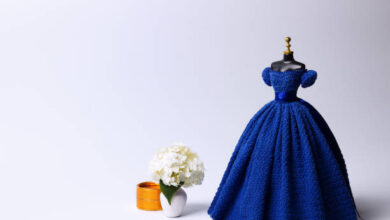Silent Disco vs Traditional DJ: Which Is Better for Your Event?
Silent discos and traditional DJs both create great parties, but they shine in different settings. If the venue has tight sound rules or late-night hours, a silent disco often wins. If the space can handle louder music and the goal is one big shared vibe, a traditional DJ is a strong pick. Silent Disco Party Rentals can tailor packages with silent disco rentals that match guest count, room size, and timelines, so planning stays simple.
Choosing between these two comes down to four things: venue rules, guest mix, budget, and how late the event runs. This guide explains the trade-offs in plain language. It also shares real examples, simple checklists, and a comparison table to help event teams make decisions with confidence.
What Is a Silent Disco vs a Traditional DJ
A silent disco sends music to wireless headphones. Guests can switch between channels and control their volume. This keeps outside noise low and helps events run later within venue rules. A traditional DJ plays through speakers that the whole room hears at once. This creates one shared energy arc. If the event needs a flexible format, silent disco party solutions can fit the space, the crowd, and the schedule.
Silent discos work well in rooftops, courtyards, museums, and campuses. They handle mixed-age crowds because each person picks a channel that fits their taste. Traditional DJs thrive in sound-friendly rooms where big speakers are welcome and the plan is one united dance floor.
Quick Summary: Who Wins and Why
Pick a silent disco if the venue has curfews, neighbors next door, or strict noise limits. The format reduces spills and keeps the dance floor alive even after quiet hours begin. Pick a traditional DJ if the room is built for sound and the goal is one powerful, shared experience.
If the plan is a hybrid night, start with speakers early, then switch to headphones to finish strong. This simple handoff uses silent disco party solutions to keep energy high without breaking noise rules.
How Silent Discos Work and What to Expect
Silent disco systems use one transmitter per channel. Headphones tune in using a switch or button. Most setups run three channels. A host can feed each channel with a DJ, a playlist laptop, or even a phone. Guests see color lights that match the channel, which adds to the look of the room.
Good systems arrive pre-charged and labeled. Many headsets run a full evening on a single charge. A small check-in table and return bin keep the experience smooth. When guests switch channels, they find the music that fits their mood in seconds. That choice keeps more people dancing longer.
Side-by-Side Comparison: Silent Disco vs Traditional DJ
| Criteria | Silent disco | Traditional DJ |
| Noise control | Very low spill outside the dance area | High spill to neighbors and outdoors |
| Music variety | Multiple channels at once | One playlist for all guests |
| Late-night fit | Works well after quiet hours | Often must turn down or stop |
| Venue flexibility | Great for rooftops, courtyards, and museums | Best in sound-friendly venues |
| Guest control | Personal volume and channel choice | Shared room volume and single vibe |
| Footprint | Headphones, transmitters, small signs | Speakers, subs, stands, cables, lights |
| Setup time | Fast, with simple check-in and returns | Sound checks and room tuning needed |
| Accessibility | Visual cues and personal volume | Shared volume, fewer personal controls |
Budget and Pricing Reality
Silent disco costs often scale by headset count. This helps match spend to guest size. Small events pay less because they rent fewer headsets. Traditional DJ fees often start at a base rate that does not change with headcount. That can be efficient for larger parties, but less flexible for smaller ones.
Budget Table (Typical Patterns)
| Item | Silent disco pattern | Traditional DJ pattern |
| Core pricing model | Per-headset pricing that drops with quantity | Flat fee plus add-ons for gear and time |
| Add-ons | Extra transmitters, lighting, shipping or delivery | Larger speakers, subs, lighting, extra hours |
| Staff needs | 2–3 staff for check-in and returns | DJ plus load-in/out help for gear |
| Hybrid use | Add a silent disco late-night after the DJ block | N/A |
Tip: If the plan includes a late-night window after quiet hours, a hybrid format can keep costs clear and the party moving. Run speakers early. Switch to headphones at curfew. The change takes minutes and avoids complaints.
Noise Rules and Late-Night Hours
Many cities set quiet hours around late evening. Outdoor and open-air venues face stricter limits. Silent discos avoid speaker spill and keep sound in the headphones. That helps hosts add hours without breaking rules. Traditional speakers are great when the room is well insulated or remote, but they can trigger limits outdoors or near homes.
If a noise cutoff starts at 10 p.m., plan the main DJ set before that time. Then switch to headphones for a two-hour finale. Guests can still dance. Neighbors can still sleep.
Guest Experience and Engagement
Silent discos make the experience personal. Guests explore channels, find favorites, and share quick moments when colors match. People who want to talk can step aside and speak at normal levels. People who want to dance can keep the music loud in the headphones without blasting the room.
Traditional DJs build a shared arc. Everyone hears the same drop and chorus together. This drives group energy and classic moments like first dances, bouquet tosses, and big sing-alongs.
Setup, Battery Life, and Range
Good placement and power planning make silent discos shine. Place transmitters high and central so signals pass over the crowd and reach corners. Walk-test coverage before doors open. Most headphones work all evening on a full charge. For very long events, keep a small set charging behind the desk. Label channels by color and genre on signs at check-in so guests learn the controls in seconds.
Silent Disco Gear Specs at a Glance
| Spec | Typical values | Why it matters |
| Battery life | Often 8 to 12 hours per charge | Covers a full evening |
| Channels | Often, 3 higher options exist | Gives guests a choice |
| Range | Often 100 to 300 meters with good placement | Covers big rooms and outdoor edges |
| Charge time | Often takes 2 to 3 hours to be full | Speeds turnover for multi-day use |
| Indicators | Color LEDs or tones for channels | Faster learning at check-in |
Note: Exact specs vary by provider. Ask Silent Disco Party Rentals for the specific model details for the venue.
Hygiene, Comfort, and Accessibility
Reputable providers ship clean, ready headsets. A quick wipe at returns keeps gear fresh during the event. Over-ear pads anda light clamping force help comfort for long sessions. Personal volume helps guests with different hearing needs. Color channels and simple beeps or clicks help people who are new to the format learn fast.
When a Traditional DJ Wins
Choose a traditional DJ when the venue can handle amplified sound and the goal is one shared experience. DJs read the room and guide the crowd. They also handle MC duties and coordinate timing with venues, photographers, and planners. For rooms built for sound, it is hard to beat the feeling of a big drop on a well-tuned system.
When a Silent Disco Wins
Choose silent disco when neighbors are close, curfews start early, or the party needs to run late. It also excels for mixed-age crowds and multi-genre nights. People pick the music they love. More people stay on the floor. For small to mid-size events, scaling by headset count can control costs. For campuses, rooftops, and courtyards, silent disco formats turn tricky spaces into safe, fun dance floors.
Real-World Scenarios
- Wedding with a 10 p.m. noise cutoff: Run a standard DJ set until the cutoff, then switch to headphones for a two-hour finale. The dance floor stays packed without noise spill.
- Campus late-night: Use three channels with curated playlists. Keep a check-in desk with two staff and a small bin of spares. Students learn switching in seconds and stay longer.
- Rooftop or courtyard: Place transmitters high and away from metal structures. Set two small quiet zones with seating for conversations near the edge.
Case Study: 100-Guest Event Plan
A 100-person party needs about 110 to 120 headsets to cover spares and late arrivals. Three channels cover today’s hits, throwbacks, and a dance lane. Place transmitters high near the center. Walk-test corners and stairs. Set up check-in with one greeter, one demo lead, and one return lead. Use signs with big fonts for channel colors. Place return bins near the exit so guests can drop gear on the way out. Cleanup ends fast when returns are near the door.
Planning Steps and Tips
- Confirm quiet hours, guest count, and room layout.
- Choose three channels and set a theme for each. Keep it simple.
- Place transmitters high and central. Avoid dense metal nearby.
- Print signs that show channel color and genre.
- Train staff on a 20-second demo: volume, channel, returns.
- Tape or cover cables at the DJ table and check-in line.
- Stage a small bin of spares behind the desk.
- For very long events, rotate a handful of headsets through a charger.
Which Should Be Chosen?
Pick a traditional DJ if the space supports speakers and the plan is one shared arc for the whole room. Pick a silent disco if the event faces noise limits, needs a late-night window, or has a wide mix of music tastes. Many hosts blend both. Start with a DJ for the classic big-room energy. Then switch to headphones to keep the dance floor going after quiet hours. This hybrid approach pairs the best moments of both worlds.
How Silent Disco Party Rentals Help
Silent Disco Party Rentals can quote the right headset counts, map transmitter placement, and prepare channel plans for the venue. Packages arrive charged, clean, and labeled. Staff get a short check-in script, so guests learn controls in under 30 seconds. For timeline control, silent disco rentals scale by quantity and plug in easily to a phone, tablet, laptop, or DJ mixer with a simple cable. The result is a smooth show that feels polished and ends with fast returns and easy teardown.
Conclusion
There is no single winner for every event. A traditional DJ is best when the venue can support amplified sound and the goal is a unified dance floor. A silent disco is best when noise rules are tight, hours run late, or the crowd has diverse tastes. Many hosts choose a hybrid: speakers early, headphones late. Silent Disco Party Rentals supports both paths, from silent disco rentals to simple handoffs and silent disco party solutions that keep energy high while staying within the rules.


